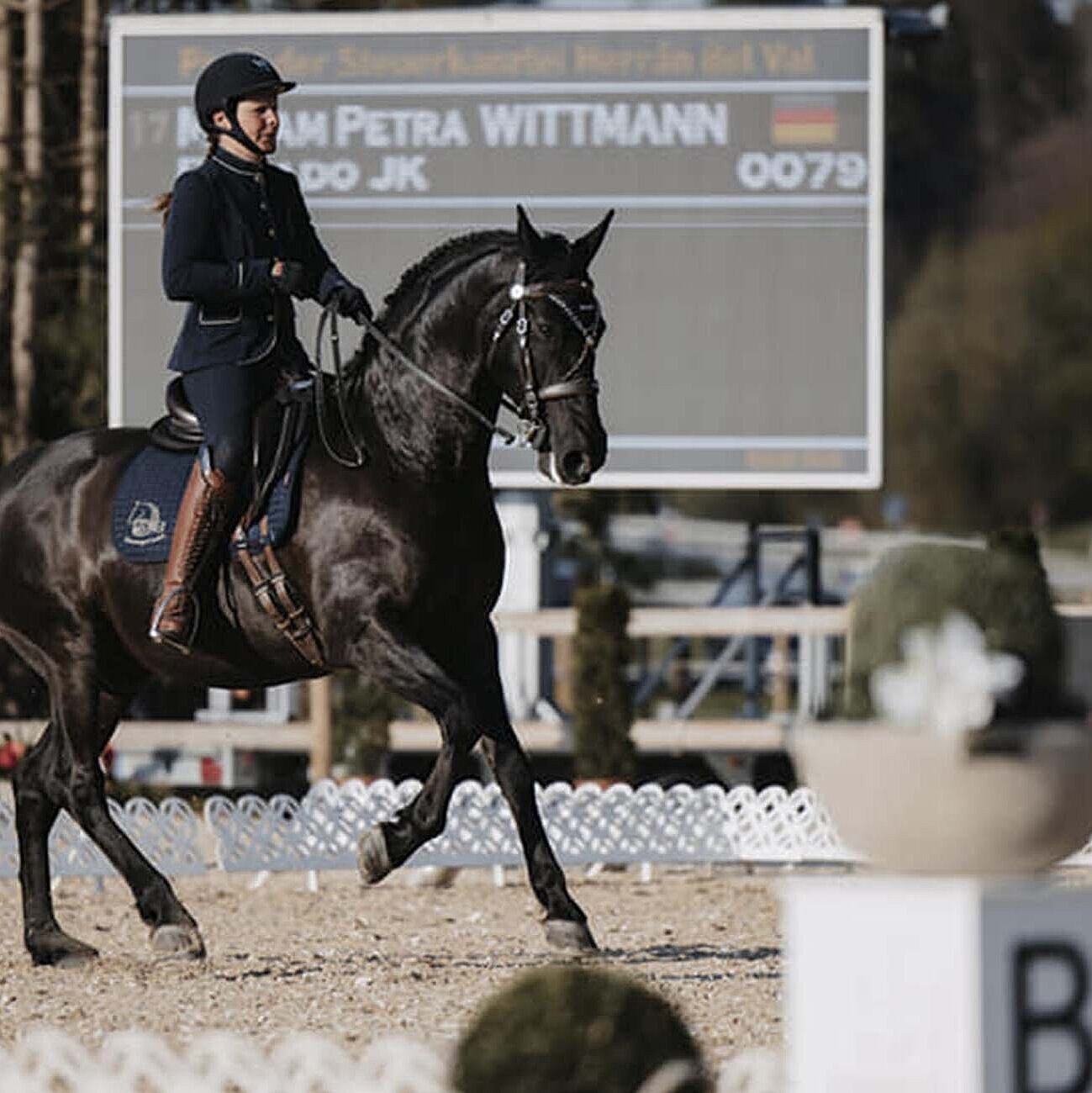Dressage as a basis
Dressage is not just a sub-discipline of Working Equitation - it is the basis for all the challenges that await the horse-rider pair in the other sub-disciplines.
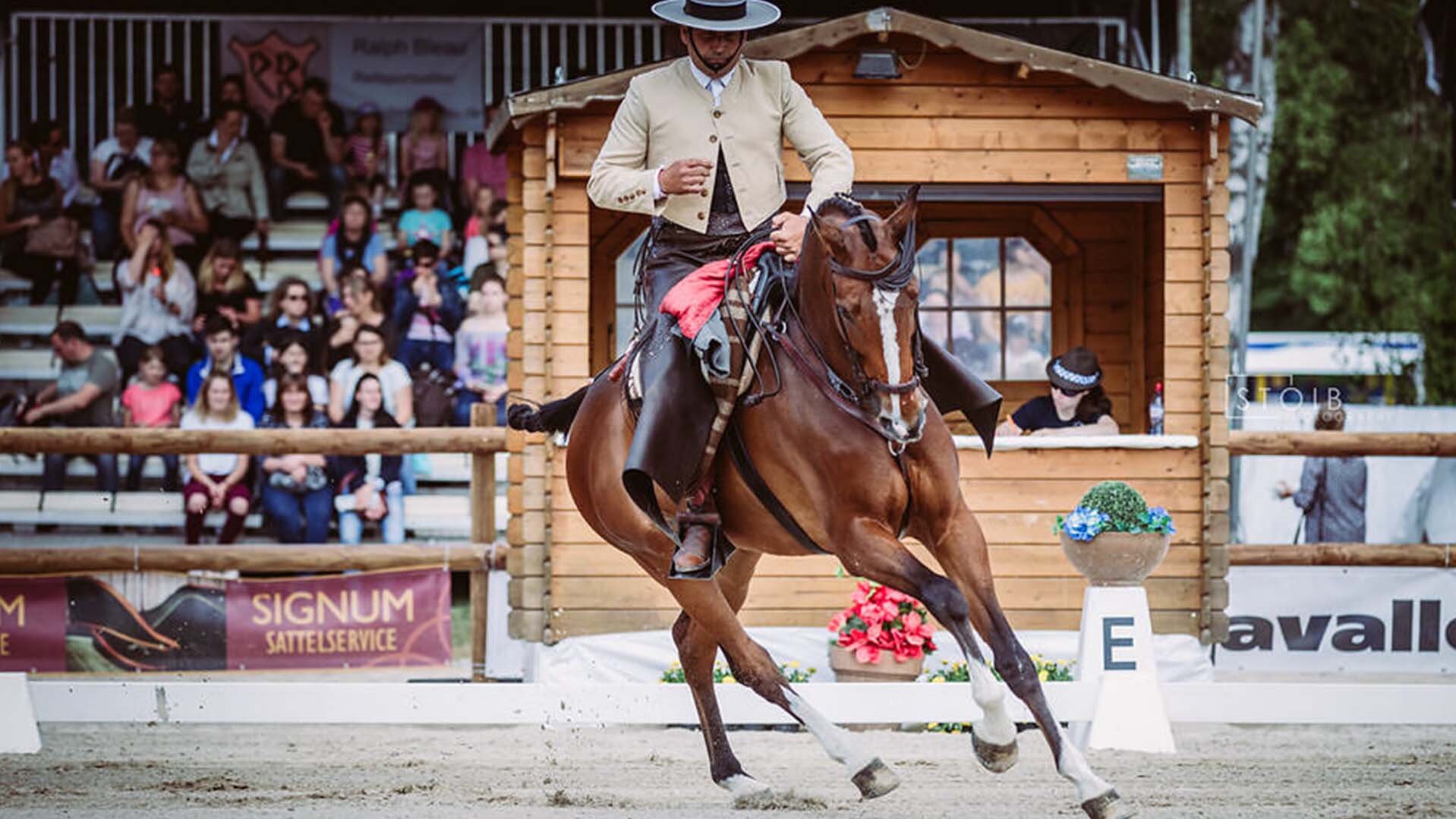
This may come as a surprise at first when you think of a vaquero working cattle in the open field. But here in particular, the rider would be nothing without a well-trained, fast, agile and rideable horse. The gymnastics and basic dressage training of the horse forms the basis for all the lessons and manoeuvres required in working equitation.
Requirements in dressage
The requirements in dressage gradually increase from the beginner class to the master class. The level of difficulty is adapted to the corresponding performance class. For example, a beginner presents his horse ridden two-handed.
The aids and the connection to the horse are refined to such an extent that in the end even the most demanding dressage movements can be performed almost effortlessly in the masterclass in the one-handed riding style.
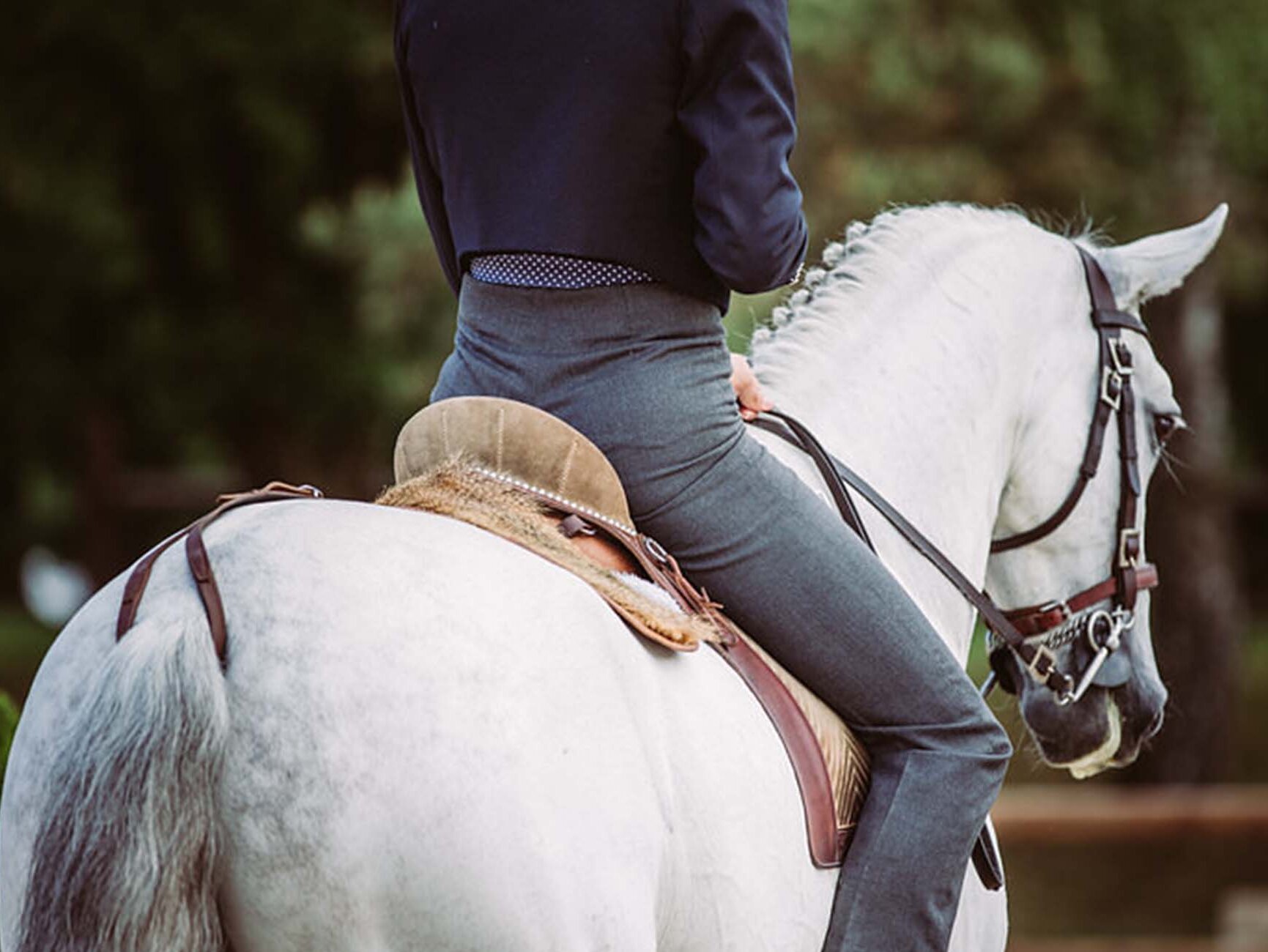
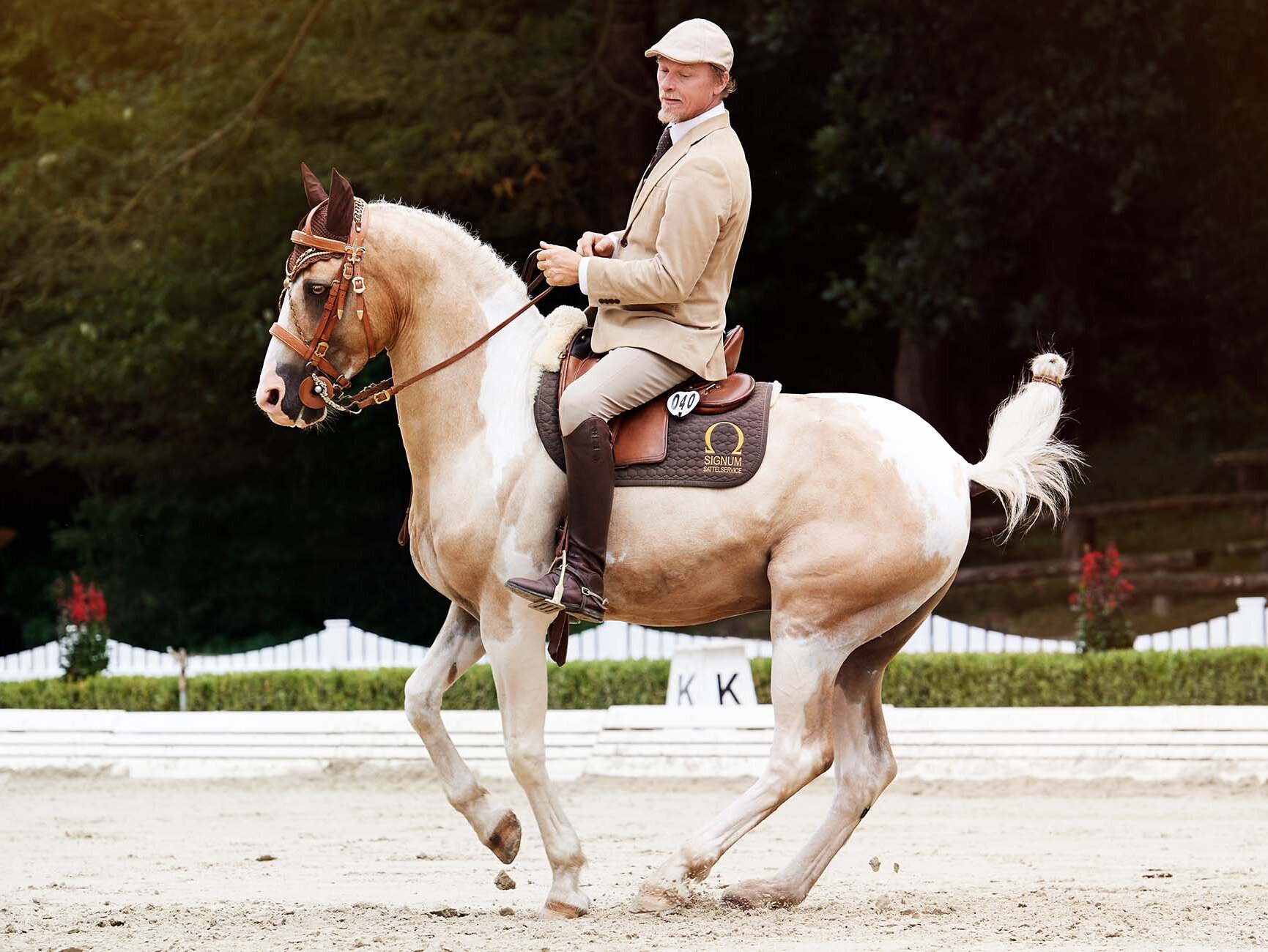
Performance classes
In the beginner class, a dressage task is required that corresponds approximately to the level of an E dressage test. Essentially, the three basic gaits and backing up are included in the dressage. The beginner class is somewhat more demanding. The dressage task corresponds approximately to A - L level in the classical area, without the reinforcements. This includes simple canter changes, short reverses and forehand turns, as well as backing up. The horse may already be presented on curb bit with 2 pairs of reins.
One-handed riding & the masterclass
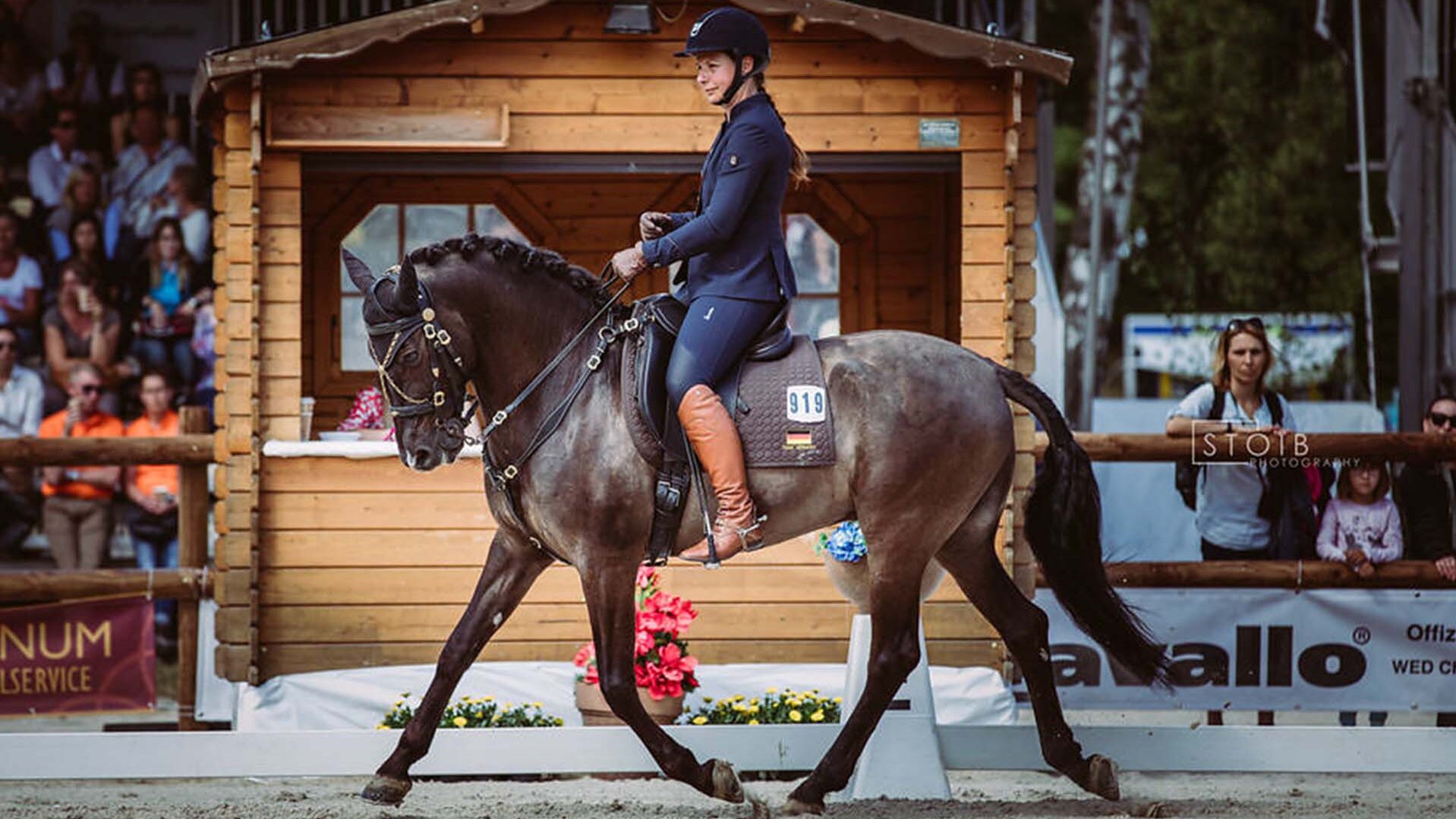
From the intermediate class to the master class, the requirements continue to increase until the horse is only ridden with one hand in the master class. Dressage exercises are shown here at a high level: from walk pirouettes, canter traversals, flying canter changes, transitions from collected to medium canter and vice versa, to stops from canter, backing up and cantering and canter pirouettes. The WED e.V. is constantly revising and expanding the show regulations for dressage exercises.
Evaluation of the dressage
In Working Equitation dressage, the rider presents the ability, rideability and gymnasticisation of his horse by means of a set dressage task. Each individual lesson of a dressage task is judged using the well-known and internationally recognised scoring system of between 0 and 10 points. In addition to the precision of the movements, the purity of the gaits and the rider's aids are also taken into account.
The presentation of the horse in dressage is explicitly desired, taking into account its type and ability, its attentiveness and its trust in the rider.

